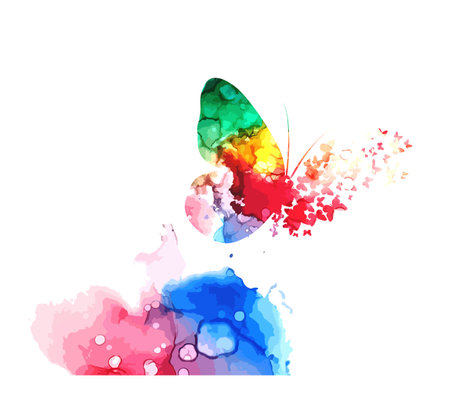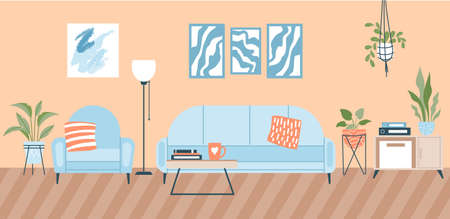Introduction to Colour Psychology in Indian Homes
Colour psychology plays a significant role in shaping the atmosphere and emotional resonance within Indian households. In India, colours are not just visual elements; they carry deep symbolic meanings influenced by centuries of tradition, spiritual beliefs, and regional preferences. From the vibrant hues of festival decorations to the subtle tones seen in daily home decor, each colour choice reflects an intentional alignment with cultural values and aspirations. For instance, yellow is often associated with auspiciousness and positivity, while red symbolises energy and celebration—both frequently used during weddings or religious ceremonies. The selection of paint and wallpaper for interiors is thus a thoughtful process, intertwined with Vastu Shastra principles, family traditions, and even climate considerations. Understanding how these colours affect mood, productivity, and harmony remains highly relevant for modern Indian families seeking both aesthetic appeal and mental well-being within their living spaces.
2. Cultural Significance of Colours in Indian Context
Colour plays a profound role in shaping the Indian mindset, especially when it comes to paint and wallpaper choices for homes and offices. In India, colours are not mere visual elements—they carry layered meanings deeply rooted in centuries-old traditions, festivals, and religious practices. Understanding these associations is crucial for anyone looking to create spaces that resonate with local sentiments and cultural aesthetics.
The Symbolism Behind Key Indian Colours
Each colour holds a unique significance within the Indian context, influencing emotions, behaviours, and even social interactions. The following table outlines how some of the most prominent colours are perceived in Indian society:
| Colour | Cultural Meaning | Common Use Cases |
|---|---|---|
| Saffron | Represents purity, spirituality, and courage; closely linked to Hinduism and national pride. | Festivals, religious ceremonies, political symbolism, accent walls in pooja rooms. |
| Green | Symbolises growth, harmony, fertility, and auspiciousness; associated with Islam and nature. | Eid celebrations, garden-inspired interiors, living rooms for a calming effect. |
| Red | Stands for love, power, prosperity, and marital bliss; integral to weddings and traditional attire. | Wedding décor, bridal rooms, temple walls. |
| Blue | Evokes tranquillity and trust; connected to Lord Krishna and the concept of infinity. | Pooja rooms, bedrooms for relaxation, corporate offices for productivity. |
Colours in Festivals & Rituals
The choice of paint or wallpaper colour often reflects the season’s festivals or family rituals. For example:
- During Diwali, homes are adorned with bright yellows and oranges to invite prosperity.
- Holi sees vibrant splashes of every hue as a celebration of unity and joy.
- Makar Sankranti highlights black as an auspicious colour on this specific day.
The Role of Colour in Religious Spaces
Temples, mosques, gurudwaras, and churches across India display distinctive colour palettes reflecting their spiritual heritage. Saffron and white dominate Hindu temples for their purity; green is prevalent in mosques symbolising peace; blue finds prominence in Sikh gurudwaras representing depth and devotion. These choices influence residential paint preferences as families often bring these sacred hues into personal prayer rooms or meditation corners at home.
Conclusion: Culturally Tuned Colour Choices Matter
Selecting paints or wallpapers aligned with Indian cultural values can positively impact mood, harmony, and even social perception. By appreciating the deep-rooted meanings behind saffron, green, red, blue and other colours, homeowners and designers can craft environments that feel both modern and meaningfully Indian—balancing aesthetics with emotional resonance.

3. Impact of Paint and Wallpaper Choices on Mindset
The psychological effects of colour in Indian homes extend far beyond mere aesthetics. Scientific studies and social research reveal that the hues chosen for paint and wallpaper can significantly influence the mindset, behaviour, and even the familial harmony within a household. In India’s diverse cultural landscape, colours carry deep-rooted symbolic meanings—reds for celebration and purity, yellows for learning and spirituality, greens for growth and prosperity. When these shades are applied to living spaces, they interact with traditional beliefs, daily routines, and emotional responses unique to Indian society.
How Colours Influence Mood in Indian Homes
Research indicates that warm colours like saffron or turmeric yellow often evoke feelings of joy and positivity, aligning with Indian festivals and rituals. Conversely, cool tones such as peacock blue or emerald green promote calmness, making them popular choices in bedrooms or meditation corners. The saturation and brightness of these colours also play a role; vibrant pinks or oranges energise communal areas, while muted pastels foster relaxation.
Behavioural Shifts Driven by Colour Choices
Social studies conducted in urban Indian settings suggest that the choice of wall finishes can subtly shape family dynamics. For example, cheerful colours in children’s rooms can encourage creativity and learning, while earthy neutrals in living rooms promote open communication among family members. In joint families—a common structure across India—the intentional use of harmonious colour palettes has been linked to reduced conflict and increased bonding.
Cultural Nuances in Surface Design
Wallpaper featuring traditional motifs like paisleys or mandalas adds another layer of psychological impact. These patterns not only express cultural identity but also create a sense of belonging and comfort. When combined with auspicious colours, such surfaces reinforce positive emotions and contribute to the collective well-being of the household.
In summary, the interplay between colour psychology, surface design, and Indian cultural values demonstrates that thoughtful choices in paint and wallpaper do more than beautify a home—they nurture mindsets, influence behaviours, and strengthen familial ties.
4. Regional Preferences and Adaptations
India’s diverse geography and multifaceted cultural landscape have given rise to a vibrant tapestry of colour preferences and design choices in paints and wallpapers. Each region, shaped by its climate, traditions, and community values, brings forth distinctive palettes that reflect local sensibilities as well as psychological needs.
Influence of Climate on Colour Choices
Climatic conditions play a pivotal role in determining the preferred colours for interiors across Indian states. For instance, the hot and arid zones of Rajasthan often feature cool hues such as turquoise, sky blue, and soft greens to create a sense of relief from the heat. In contrast, the humid coastal areas of Kerala and Goa embrace earthy tones like terracotta, ochre, and sea green to blend harmoniously with their lush environment.
Regional Colour Palettes: A Comparative Overview
| Region/State | Popular Colours | Cultural/Environmental Influence |
|---|---|---|
| Rajasthan | Turquoise, Blue, Yellow | Heat mitigation, Royal heritage (Jodhpur “Blue City”) |
| Kerala | Green, White, Terracotta | Tropical climate, Traditional architecture |
| Punjab & Haryana | Bright Reds, Mustard Yellow, Orange | Agricultural abundance, Festive spirit (Baisakhi) |
| Bengal | White, Red, Gold Accents | Cultural rituals (Durga Puja), Humidity adaptation |
| Maharashtra & Gujarat | Saffron, Indigo, Earthy Browns | Marathi-Gujarati folk art influence, Moderation for mixed climates |
| Northeast India | Pale Greens, Pastels, Bamboo Patterns | Biodiversity reflection, Tribal motifs |
Tradition Meets Modernity: Wallpaper Design Trends Across India
The resurgence of wallpaper in Indian homes has seen traditional motifs—like paisleys, mandalas, and temple patterns—integrated with contemporary minimalism. North India favours bold prints inspired by Mughal art or floral jaali work; southern states opt for geometric patterns echoing temple architecture; while eastern regions prefer delicate botanicals mirroring their natural landscapes.
Community Values and Social Significance of Colour Choices
Colours are not just aesthetic but deeply symbolic across Indian communities. In Gujarat and Rajasthan, vibrant wall murals celebrate festivals and weddings. In South India, subtle tones signify peace and spirituality. The choice of paint or wallpaper frequently communicates the household’s beliefs—such as prosperity (green), purity (white), or energy (orange)—and fosters a harmonious atmosphere aligned with Vastu Shastra principles.
5. Integration of Vastu Shastra and Modern Colour Psychology
In India, the significance of colour in interior design is deeply rooted in both ancient philosophies and emerging scientific understanding. Vastu Shastra, an age-old architectural doctrine, prescribes specific colours for each direction and room to promote harmony, prosperity, and positive energy flow. For example, Vastu recommends green for the north as it represents growth, while white or cream hues are ideal for the west to foster stability. On the other hand, modern colour psychology analyses how shades influence moods, productivity, and well-being based on empirical research. When these two approaches are thoughtfully blended, homeowners and designers can achieve not just aesthetic appeal but also psychological comfort and cultural alignment.
Bridging Tradition with Science
The fusion of Vastu principles with contemporary colour psychology allows Indian families to make informed decisions about paint and wallpaper selection. For instance, while Vastu might suggest blue for bedrooms facing the west to encourage calmness, modern psychology supports this choice by highlighting blue’s proven ability to reduce stress levels. This scientific validation reassures residents that traditional wisdom aligns with human behavioural responses.
Optimising Living Spaces
Indian households today increasingly seek interiors that reflect their cultural identity yet cater to modern lifestyles. By integrating both Vastu and psychological insights, choices become more nuanced: a study room may feature yellow according to Vastu’s guidance for intellectual stimulation, with modern research affirming yellow’s role in boosting concentration and creativity. Such dual validation ensures both tradition and individual well-being are respected.
Cultural Resonance Meets Personal Well-Being
This holistic approach resonates strongly with the Indian mindset, where respect for ancestral knowledge coexists with openness to global trends. The careful selection of colours—guided by both Vastu Shastra’s directional logic and psychological effects—results in spaces that nurture emotional balance, social interaction, and spiritual positivity. Ultimately, blending these philosophies enables optimal choices in paints and wallpapers that are uniquely tailored to the Indian context.
6. Practical Tips for Colour Selection in Indian Settings
Choosing the right colours for paint and wallpaper in Indian homes requires a thoughtful balance between psychological impact and cultural resonance. Here are some practical tips tailored specifically for Indian homeowners, architects, and interior designers to create harmonious and uplifting spaces:
Understand the Purpose of Each Space
Start by considering the function of each room. For instance, calming shades like light blue or soft green are ideal for bedrooms to promote relaxation, while energetic hues such as saffron or yellow can invigorate living rooms and dining areas where families gather.
Respect Regional Preferences & Traditions
India’s diversity means that colour preferences can vary greatly from North to South or East to West. In Kerala, earthy tones inspired by nature may feel more authentic, whereas in Rajasthan, vibrant jewel tones like royal blue and magenta reflect local heritage. Always take regional traditions and beliefs into account when making your selection.
Embrace Vaastu Shastra Principles
Vaastu Shastra, India’s ancient architectural science, provides valuable guidance on colour placement. For example, using greens or browns in the East brings harmony, while whites and silvers in the North attract prosperity. Aligning your choices with these principles can enhance both aesthetics and positive energy flow.
Balance Modern Trends with Cultural Identity
While contemporary palettes—such as pastels or muted neutrals—are gaining popularity, combining them with traditional motifs or accent walls in bold Indian colours creates a unique fusion that honours both modernity and heritage.
Test Colours in Natural Light
Indian homes often receive abundant sunlight. Test your selected shades during different times of the day to see how they interact with natural light and existing décor. Colours may appear brighter or subtler depending on orientation and window placement.
Consider Psychological Impact
Certain colours evoke universal responses: cool blues foster tranquillity; warm reds stimulate activity; serene whites symbolize purity. Choose hues that align with the emotional tone you wish to set for each space, keeping family members’ temperaments in mind.
Incorporate Local Art & Textiles
Integrate traditional elements like Madhubani wall art or Rajasthani block-print patterns into your wallpaper or paint accents. This not only celebrates local culture but also adds layers of meaning and visual interest.
By blending psychological insights with respect for India’s rich cultural tapestry, you can create interiors that support well-being, express individuality, and pay homage to tradition—all through the power of colour.
7. Conclusion: Harmonising Tradition and Science in Indian Interiors
India’s relationship with colour is profound, shaped by centuries of tradition, religious symbolism, and regional diversity. From the vibrant hues of Rajasthan’s palaces to the soothing pastels found in Kerala homes, every shade carries stories and meaning deeply ingrained in the Indian psyche. Yet, as modern science sheds new light on how colours influence mood, productivity, and well-being, there is an emerging opportunity to blend this wisdom with our cultural roots for interiors that nurture both heart and mind.
Striking a balance between ancient colour symbolism—like the auspiciousness of yellow during festivals or the calming effects of blue in prayer rooms—and contemporary psychological insights can elevate living spaces into true sanctuaries. By understanding how reds energise social areas, greens foster relaxation, and whites symbolise purity while enhancing openness, homeowners and designers can make informed choices that respect heritage without compromising on comfort or functionality.
Ultimately, harmonising tradition with science does not mean letting go of India’s colour-rich legacy. Instead, it invites us to reinterpret these traditions through the lens of modern psychology—creating interiors that are not just visually stunning but also emotionally supportive and culturally meaningful. Such spaces become places where families thrive, creativity flourishes, and well-being is prioritised—reflecting the best of both worlds for today’s Indian lifestyle.

